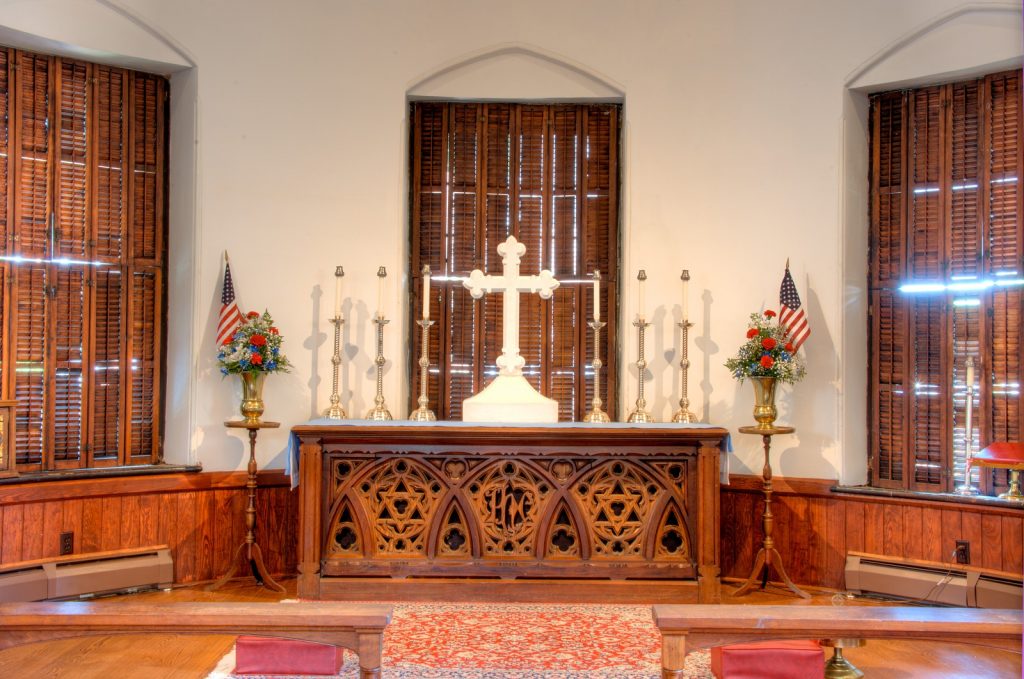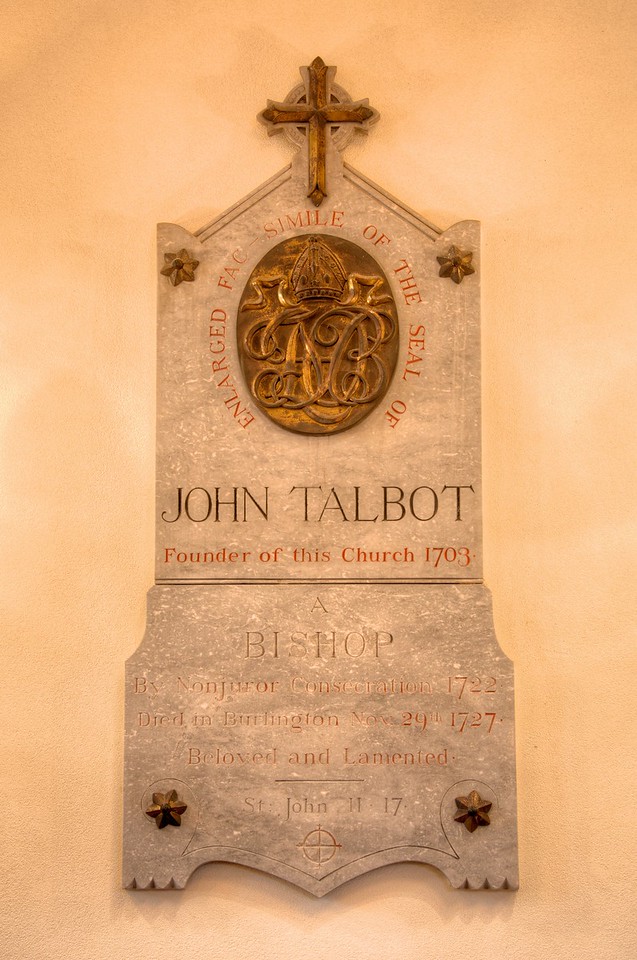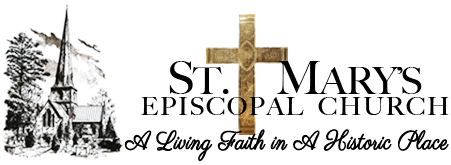Old St. Mary’s is the original church building of the parish, with parts of the building dating back to 1703. The building was expanded in 1769, in 1811, and again in 1834. After New St. Mary’s Church was completed in 1854, Old St. Mary’s was remodeled to its current Victorian Gothic interior appearance in 1875, when the building was re-purposed for use as a Sunday School and day school. Old St. Mary’s was restored in 1999-2000 and is used for summer worship and special events.
Apart from the Gothic beams and woodwork (which date to 1875) perhaps the most noticeable feature of Old St. Mary’s Church is its Apse, the semicircular end of the building where the Altar is located. An “apse” is an ancient architectural element, having been common in public buildings of classical Greece and Rome, and was adopted in Christian architecture from very early times.

Previous to 1811, the flat east wall of Old St. Mary’s featured a large, likely Palladian, window with the Communion table below it. Canopied box pews, one for the royal governor, were located on either side.
In 1811, under the direction of architect Robert Mills, the box pews throughout the building were replaced with “slip” or bench-type pews. The east end of the building was extended with an apse, semicircular on the inside and semi-octagonal on the outside. The pulpit, which was formerly against the north wall, was replaced with a new raised pulpit in the apse. A reading desk was placed just below the pulpit, and the Communion Table stood below and in front of that. This “triple-decker” arrangement was flanked by round headed windows on either side of the apse, with a robing closet below or behind the pulpit. The chancel would have extended into the main part of the church with a curved Communion rail.
The apse is notable for its acoustic properties. One of Robert Mills’s interests as an architect was acoustics; at one point he was engaged to improve the sound qualities of the old Hall of Representatives chamber in the United States capitol building. The curved ceiling of the apse serves as a very effective reflector of sound, so that a speaker in that place has no trouble being heard throughout the room. Although it may never be determined for certain, it is very possible that the domed ceiling of the apse was crowned with a skylight, as is seen in other designs by Mills, to provide light on the lectern, pulpit and preacher.
Robert Mills, born in Charleston, South Carolina, was one of America’s first “native” architects. One of his earliest independent commissions was for a new (now historic!) prison in Mt. Holly. At that same time Mills was engaged to design and oversee the work at St. Mary’s Church, possibly because parishioner Charles Ellis was involved with the prison commission. In addition Mills’s brother Thomas owned a farm near Burlington and was well acquainted with the parish.
Later in his career Mills would be responsible for the design of many public and private buildings, including the Washington Monument in Baltimore, the old Patent Office Building and Treasury Building and, most well-known, the Washington Monument in Washington, D.C.




